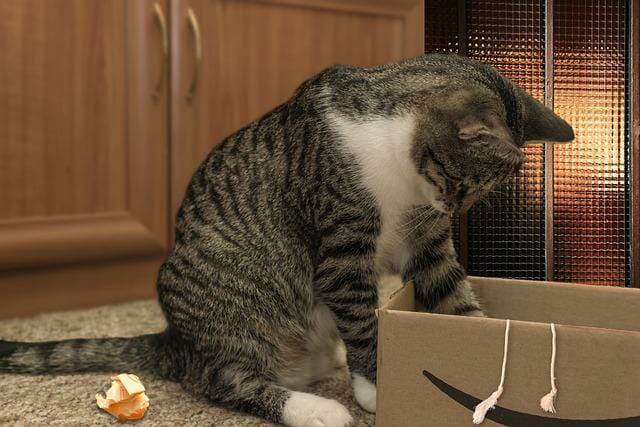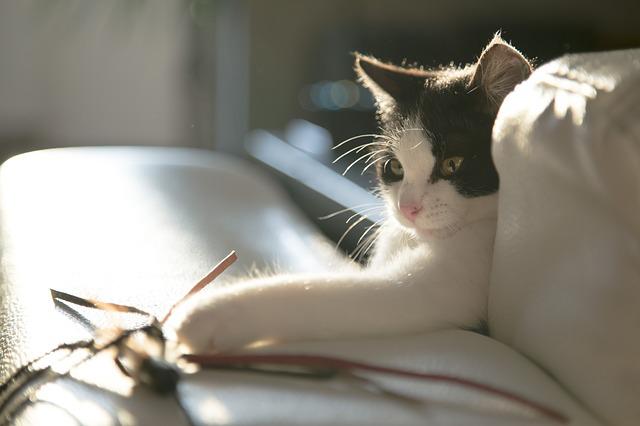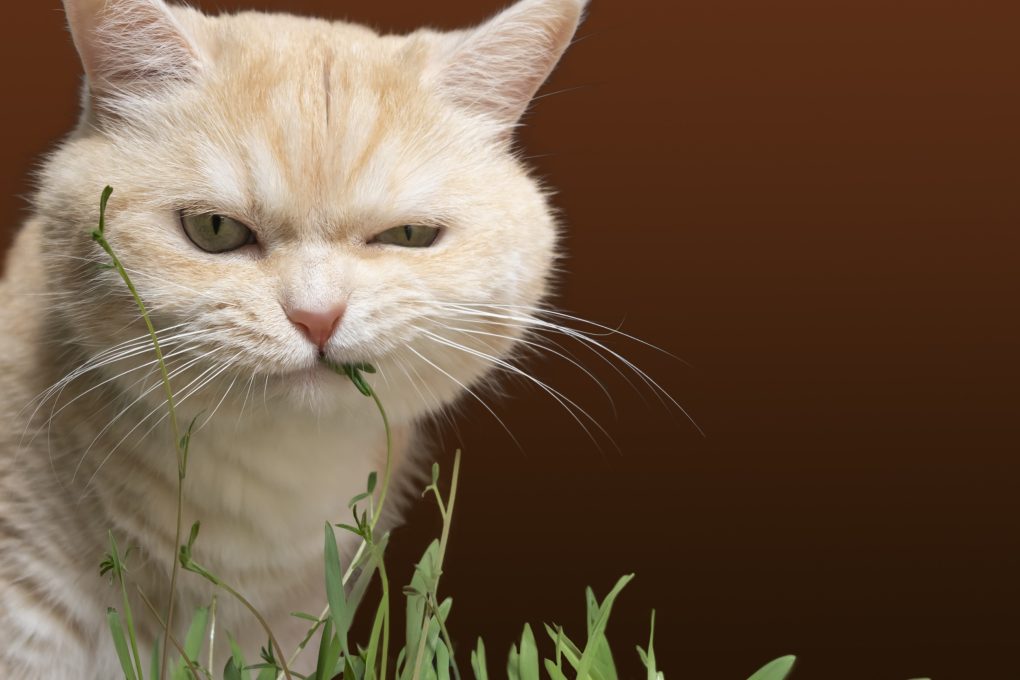Is Catnip Good for Cats: Benefits and Risks of Catnips to Cats
Yes, catnip is generally considered safe and beneficial for cats. It can be a fun and stimulating treat for cats, encouraging play and exercise and providing mental stimulation. However, it’s important to use catnip in moderation and under supervision. Giving your cat too much can cause adverse effects such as vomiting, diarrhea, or even aggression in rare cases. It’s


Table of Contents
Benefits of Catnip for Cats
Enhances Exercise and Activity
Catnip can be a great tool for encouraging play and exercise in cats. When exposed to catnip, they may become more active and playful, which can help promote physical activity and exercise.
Many pet stores sell toys infused with catnip, such as balls, mice, and stuffed animals. These toys can be a fun and stimulating way for cats to play and exercise. Cats love to scratch, and sprinkling catnip on their scratching post can encourage them to use it more often. This can help promote exercise and also help protect your furniture from scratching.
Also, you can make catnip tea by steeping catnip leaves in hot water and then letting it cool. You can pour the tea over your cat’s food or offer it to them in a bowl. This can be a fun and healthy way to encourage your cat to play and exercise.
Taking your cat camping can also be a wonderful bonding experience, and giving them catnip can add to their enjoyment.
If you have a garden or outdoor space, consider planting catnip. Cats love to rub against and roll in catnip plants, which can be a fun and stimulating way to play and exercise.
Promotes Healthy Socialization
Catnip can promote healthy socialization in cats, as it can help to create positive experiences and interactions between cats. Here are some ways that catnip can be used to promote healthy socialization:
- Use catnip to introduce new cats: If you’re introducing a new cat to your household, giving both cats a small amount of catnip can help to create a positive association between them. This can make the introduction process easier and less stressful for both cats.
- Use catnip during playtime: Playing with catnip toys or using catnip spray during playtime can be a fun and stimulating way for cats to interact with each other. This can help to promote healthy socialization and positive interactions between cats.
- Use catnip as a reward: If you have multiple cats, using it for good behavior can help promote positive interactions between them. For example, if one cat is being friendly to another cat, you could reward them both with a small amount of catnip.
- Use catnip during grooming: If you have multiple cats that don’t get along, using catnip during grooming sessions can help to create a positive association between them. This can help to reduce stress and tension during grooming sessions.
Reduce Anxiety and Aggression
According to the Preventive Vet, catnip may help reduce anxiety and aggression in some cats. The compounds in catnip can have a calming effect on cats, which can help to reduce stress and tension. If your cat is feeling stressed or anxious, giving them a small amount of catnip can help to promote relaxation and reduce stress. This can be especially helpful during times of change or upheaval, such as moving to a new home or introducing a new pet.
If your cat becomes aggressive or agitated during grooming sessions, using catnip can help to reduce their anxiety and make the process easier and less stressful. Many cats become anxious and stressed during veterinary visits. Using catnip can help to calm them down and make the visit less stressful. For example, if your cat is aggressive towards other cats, use catnip during playtime or as a reward for good behavior.
Offers Natural Pain Relief


While catnip is primarily known for its behavioral effects on cats, some studies suggest it may also have pain-relieving properties. For example, the essential oil in catnip contains a compound called nepetalactone, which has been found to have mild analgesic (pain-relieving) properties. Here are some ways that catnip may offer natural pain relief for cats:
- Topical application: Catnip essential oil can be diluted and applied topically to areas of discomfort. However, it’s important to consult a veterinarian before using catnip or any other essential oil on your cat, as some oils can be toxic or cause skin irritation.
- Ingestion: Some cats may experience pain relief after ingesting catnip. However, using catnip in moderation and under supervision is important, as excessive ingestion can lead to vomiting and diarrhea.
- Stress reduction: As stress and pain are closely linked, reducing stress levels in cats can help to alleviate pain. Catnip’s calming effects on cats may help to reduce stress and anxiety, which in turn may help to alleviate pain.
Providing Mental Stimulation
Catnip can provide mental stimulation for cats in several ways. Catnip can make cats more playful and active, which can help to stimulate their minds and keep them entertained. Playing with your cat using catnip toys or sprinkling catnip on their favorite toys can help to stimulate their senses and promote playfulness.
The scent and taste of catnip can provide a sensory experience for cats, which can help to keep them mentally stimulated. Some cats may enjoy licking or chewing on catnip, while others prefer to rub against or roll in it.
While catnip can make cats more active and playful, it can also have a calming effect on some cats. This can help reduce stress and anxiety and promote relaxation, which can benefit mental health.
Easing Gastrointestinal Issues
Catnip contains compounds that have anti-inflammatory properties. These compounds may help to reduce inflammation in the digestive tract, which can help to alleviate symptoms such as bloating, gas, and diarrhea.
Catnip also has a calming effect on some cats, which may help to reduce stress and anxiety that can contribute to digestive issues. For example, stress and anxiety can affect the digestive system by slowing digestion, causing spasms in the intestinal muscles, and increasing inflammation.
Lastly, catnip may promote digestion by stimulating the production of digestive enzymes and bile, essential for breaking down food and absorbing nutrients. This can help to alleviate symptoms such as constipation and indigestion.
Strengthening the Bond Between Cat and Owner
Catnip can encourage cats to engage in interactive play with their owners, which can help strengthen their bond. Playing together can help build trust and affection and allow the cat and owner to have fun and enjoy each other’s company.
Using catnip as a reward for good behavior can help reinforce positive behaviors in cats and encourage them to continue engaging in desirable behaviors to their owners. This can help to build a stronger bond and foster a positive relationship between the cat and the owner.
Sharing experiences with your cat, such as watching them play with catnip toys or observing their reaction to catnip, can help to create a stronger connection between you and your cat. These shared experiences provide an opportunity for bonding and deepening the relationship between the cat and the owner.
Risks of Catnip for Cats
Overstimulation
Overstimulation is when an individual becomes overwhelmed by sensory input, leading to excessive or abnormal behavior. For example, in the case of cats and catnip, overstimulation can occur when a cat is exposed to too much catnip or when a cat has a particularly strong reaction to the herb.
Symptoms of overstimulation in cats can include hyperactivity, increased vocalization, aggression towards other animals or people, and inappropriate elimination (such as urinating outside the litter box). Some cats may also become disoriented or exhibit erratic behavior.
If your cat is becoming overstimulated after exposure to catnip, it’s best to remove it and let it calm down in a quiet, dark space. Providing your cat with a familiar and comfortable environment can help to alleviate some of the stress and anxiety associated with overstimulation.
Ingestion
While catnip is generally considered safe for cats, ingesting large amounts of catnip can cause gastrointestinal upset, such as vomiting or diarrhea. These symptoms are usually mild and will resolve independently within a day or two.
If you suspect your cat has ingested a large amount of catnip or is experiencing severe symptoms, it’s important to contact your veterinarian immediately. They can assess your cat’s condition and guide how to manage any potential complications.
To prevent ingestion of catnip, it’s important to keep it out of reach of your cat, especially if your cat tends to chew on plants or other objects. For example, consider using catnip toys or other products that are designed to be safe for cats to play with rather than providing loose catnip that can be ingested.
Allergic Reactions
While rare, some cats can have an allergic reaction to catnip. Allergic reactions to catnip can cause a range of symptoms, including itching, sneezing, nasal discharge, coughing, and respiratory problems. In severe cases, an allergic reaction can lead to anaphylaxis, which requires immediate medical attention.
If you suspect that your cat is allergic to catnip, it’s important to contact your veterinarian immediately. They can assess your cat’s condition and guide how to manage any potential complications.
To prevent allergic reactions, it’s important to introduce catnip to your cat slowly and in small amounts, especially if your cat has not been exposed to catnip before. You may also want to monitor your cat closely after exposure to catnip to see if they exhibit any symptoms of an allergic reaction. For example, if your cat does have an allergic reaction to catnip, it’s best to avoid giving it to them in the future.
Addiction


While catnip is not addictive in the traditional sense, some cats may become overly reliant on it for stimulation. Overuse of catnip can lead to a decrease in its effectiveness over time, which can cause the cat to lose interest in other forms of stimulation. This can lead to a dependence on catnip for stimulation, which can be problematic if the cat cannot access it.
To avoid potential addiction or dependence on catnip, it’s important to use it in moderation and provide your cat with other forms of stimulation and enrichment, such as toys, scratching posts, and playtime with their owners. It’s also a good idea to rotate catnip with other types of herbs and toys to keep your cat interested in different types of stimulation.
Suppose you notice that your cat is becoming overly dependent on catnip or is showing signs of addiction, such as agitation or anxiety when they do not have access to it. Consulting with your veterinarian or a qualified animal behaviorist is important. They can guide how to manage your cat’s behavior and help prevent any potential health problems associated with addiction or dependence on catnip.
